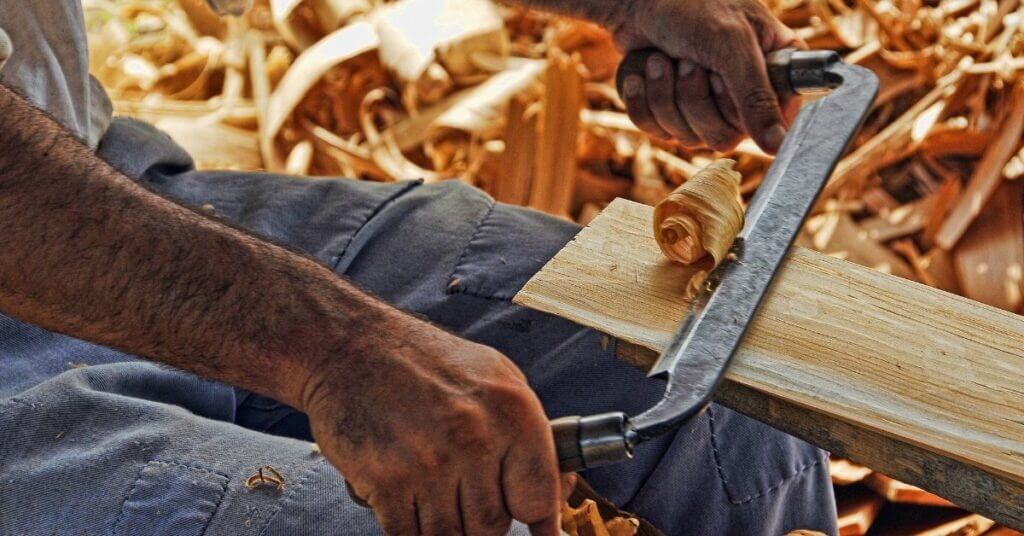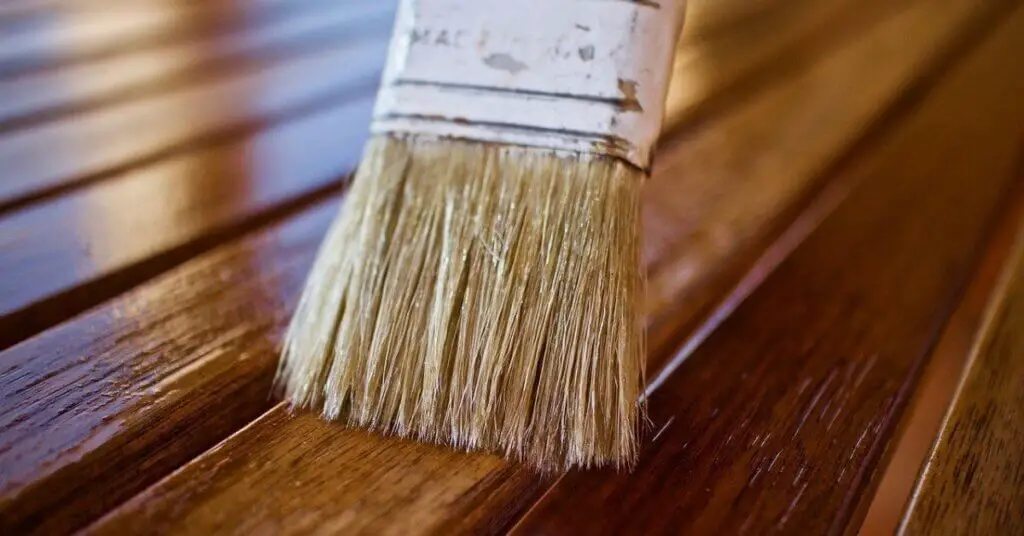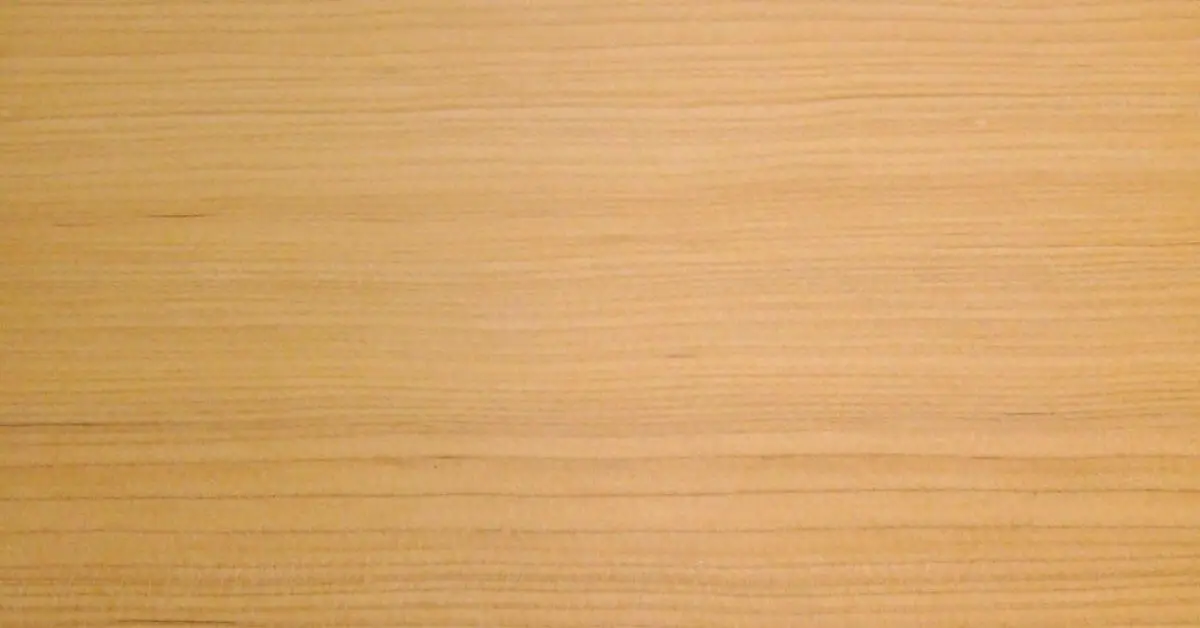What is hemlock wood?
Hemlock woods is softwood, Used for light framing, sheathing, and plywood. Hemlock is light in weight, stable, and affordable wood.
Due to its great properties, it is suitable for indoor uses and construction purposes. It has many special properties, which make it different from other softwood.
There are about 8 to 10 species of Hemlock, Four species are native to North America and four to six are native to eastern Asia. Some of the main species are as follows: Eastern hemlock, Western hemlock, and Mountain hemlock.
The color appearance of these species are very close to each other, But there is a difference between their hardness, weight, and price.
Hemlock is a deciduous medium-sized tree. Some species of hemlock are famous as timber while some are known as ornamental trees. Hemlock is a tall pyramidal tree with small blunt leaves.
| Scientific name: | Tsuga |
| Tree Size: | 10–60 m (33–197 ft) tall, 2–3 ft (.6–1 m) trunk diameter |
| Wood Color: | Light reddish-brown |
| Durability: | Rated as moderate-durable |
| Rot-resistant: | Moderate rot-resistant |
| Workability: | Easy to work |
| Finishing: | Good finishing qualities |
| Type: | Softwood |
| Uses: | General construction, roof decking, and plywood |
Hemlock Wood Use
1. Plywood
Hemlock has a relatively good strength-to-weight ratio and uniform texture. Hemlock veneer sheets are widely used for making versatile and affordable plywood. This plywood is used for basic construction such as furniture, especially cupboards, kitchen cabinets, and office tables.
Hemlock plywood is soft and moderately durable for exterior applications, But it is considered for interior applications.
Plywood is mainly divided into 4 grades on the basis of quality, this grade is A, B, C, and D. A-grade is the highest quality plywood. Whereas D grade is low-quality plywood.
2. Boxes/crates
To make quality boxes/create, the wood should be strong and light in weight.
Light and strong boxes/crates are considered better, which can hold heavy goods and are easy to transport.
It is also important to have affordable wood, as parcel companies do not want to spend a lot of money on boxes/crates.
3. Paper Pulp
Eastern hemlock is a great wood for the paper industry. Generally, The paper made by Hemlock is mainly used for newsprint and wrapping paper.
Hemlock wood has long and uniform fibers, These are essential properties for making paper. Lumber is easily available at an affordable price.
Around 85% of softwoods and 15% of hardwoods are used to make paper worldwide. Wood is the main raw material of the pulp and paper industry. According to Fortune Business Insights, the global market size of the paper industry is USD 349.18 billion. Which is likely to reach USD 370.12 billion by 2028.
4. Framing
Hemlock wood is one of the popular woods for Framing. It is widely used for framing because it is light and strong.
Hemlock is resistant to warping and twisting. But make sure the wood must be dry before using. Wet wood can affect your construction.
Hemlock is a great alternative to hardwood framing and another reason is that it is affordable and more readily available than hardwood.
Hemlock Wood Advantages and Disadvantages
Advantages
- Appearance: Hemlock is known for its natural light reddish-brown color. Because Light Wood allows for a large quantity of wood surface in a room. Light Wood is the perfect choice for small areas.
- Great Workability: The hemlock is very easy to work with. It saves time and resources for carpenters. Hemlock wood finishes well and gives excellent results.
- Affordable: Hemlock is an inexpensive wood, and it is readily available. Softwoods generally grow faster than hardwoods, So they are cheaper. The price of hemlock is about $15-$16 per square foot.
Disadvantages
- Not Rot Resistance: Hemlock is non-durable regarding decay resistance, and also susceptible to insect attack. So hemlock wood is a bad choice for outdoor purposes.
- Longevity: Hemlock is less suitable for high-traffic areas. Compared to hardwoods, softwoods are more prone to dents and scratches. Regular maintenance is required.
- Hard to identify: There are several species of hemlock, which are very close to each other. Sometimes owners can get confused about choosing the right species of hemlock.
Hemlock Wood Color and Grain
Heartwood is light reddish-brown to yellowish-brown and sapwood is slightly lighter in color. Sometimes sapwood and heartwood look almost alike.
Like most woods, hemlock wood also darkens with age. Exposure to external elements and sunlight makes this process even faster.
Generally, the grain of the hemlock is straight, but interlocked or spiraled is also possible in some parts. wood has a coarse, uneven texture.
Working with Hemlock Wood

Hemlock is known for its excellent working properties. Almost all species of hemlock are easy to work with both hand and power tools. Hemlock wood is soft to work with, making it suitable for carving and trimming.
But eastern hemlock wood tends to splinter easily when being worked, due to its low density and grain pattern. In some species, sanding can create dips and uneven surfaces.
Wood holds screws and nails well and accepts almost all types of glue without any problem.
Can you stain hemlock wood?

Yes, You can stain Hemlock wood easily. Due to the light color of hemlock wood, it accepts almost all types of stains. You can stain it with any color from a light golden hue to dark.
But before staining, the hemlock wood surface must be prepared for stain. So that there is no blotchiness and grain reversal problem, The blotchy problem usually occurs with softwoods, such as pine.
Blotchy and uneven stain often occurs because the wood absorbs the stain quickly. The best solution for Blotchy stains is a pre-stain wood conditioner.
Before moving to the apply pre-stain conditioner, sand the wood surface well and apply a couple of pre-stain wood conditioner coats. Hemlock gives excellent results after staining.
Can You Paint Hemlock Wood?
Yes, You can paint Hemlock wood. It accepts all types of paint. Oil-Based Paint is a great choice for the interior due to its high-class finish and durability.
Before applying paint, two coats of primer should be applied. Primer seals the wood surface So that the paint doesn’t soak into it and makes a strong bond between the wood and paint. Also, Primer extends the life of the paint and protects against moisture.
Before applying paint and primer, sand the wood surface well and make it smooth and clean. If there is a dent, repair it and seal the knots.
After the primer dries well, then start to apply paint. Apply the paint in a dust-free area and let it dry.
Can Hemlock Wood Cause Allergies?
Yes, Hemlock Wood Cause Allergies. But no serious problem has been observed. Hemlock Wood has been reported to cause skin irritation when you are working with hemlock wood.
By the way, all types of wood dust can be harmful to asthma patients. When working with wood, cover your exposed skin and wear glasses.
According to Wikipedia, Hemlock (Tsuga) species are not poisonous.
How Hard is Hemlock Wood?
Hemlock is a low-density softwood, So we cannot expect much hardness from hemlock wood. But it has enough hardness for making household furniture. As we know, there are mainly three species of Hemlock. The hardiness of hemlock species varies.
The hardness of any wood corresponds to its weight. You can see this in the table given below.
| # | Janka Hardness | Average Dried Weight |
| Eastern Hemlock | 500 lbf (2,220 N) | 28 lbs/ft3 (450 kg/m3) |
| Western Hemlock | 540 lbf (2,400 N) | 29 lbs/ft3 (465 kg/m3) |
| Mountain Hemlock | 680 lbf (3,030 N) | 33 lbs/ft3 (530 kg/m3) |
Does Hemlock Wood Rot?
Yes, Hemlock wood can rot, it is rated as low in decay resistance. Hemlock wood does not have natural rot-resistant properties. The open grains of the wood tends to absorb moisture, which makes the wood prone to fungus and the wood smells.
We can say that the main reason for the rotting of wood is fungal growth in damp wood. If any wood or furniture is kept dry, its durability increases. To make it dry and durable, you can use paint or polish. This is a proven way.
Some high-density wood does not absorb moisture, this type of wood contains natural oils. So the surface of the wood looks oily. These natural oils act as protective layers from the external elements.
Is Hemlock good firewood?
Hemlock is softwood, So it is not the most popular firewood choice. Generally, softwoods do not generate much heat and tend to burn very quickly.
But this does not mean that hemlock is not used as firewood. Hemlock is an affordable wood that can be used as firewood.
A softwood contains lots of water, When it burns it produces a lot of smoke and sparks. The BTU value of softwood is less than that of hardwood.
A British thermal unit (Btu) is a measure of the heat content of fuels or energy sources.
But there are also some softwoods that are considered suitable as firewood, such as pine, balsam, spruce, cedar, tamarack, alder, and poplar.
Types of Hemlock
Eastern Hemlock (Tsuga canadensis)
Eastern hemlock is also known as Canadian Hemlock or eastern hemlock-spruce. Wood is light in weight, medium-hard, coarse-grained, uneven in texture.
The color of the heartwood is light reddish-brown and the sapwood is light brown. Growth rings are present in the heartwood of older trees.
It is a medium-sized (65-100 ft (30 m) tall, 2-3 ft (.6-1 m) trunk diameter), a coniferous tree native to eastern North America. It is used as an ornamental tree in the United Kingdom and many regions of Europe.
Rot Resistance: Eastern hemlock wood is not rot-resistant and non-durable regarding decay resistance and is also susceptible to insect attack.
Hardness: The hardness of Eastern Hemlock is low to medium. Its Janka hardness value is 500 lbf (2,220 N).
Workability: Working properties are not very good. Eastern Hemlock wood tends to splinter easily when being worked. Glues, stains, and finishes well. Accepts stains easily. Looks excellent after finishing.
Uses: Boxes, pallets, crates, plywood, framing, and other construction purposes.
Western Hemlock (Tsuga heterophylla)
Western hemlock is also known as western hemlock-spruce. Wood is light and medium-hard. Grain is generally straight, with a coarse, uneven texture.
The color of the heartwood is light reddish-brown and the sapwood is light brown. Growth rings are present in the heartwood of older trees.
Western hemlock is a large evergreen conifer growing to 65-100 ft (30 m) tall, 2-3 ft (.6-1 m) trunk diameter, It is native to the west coast of North America.
Rot Resistance: Western hemlock wood is not rot-resistant and non-durable regarding decay resistance and is also susceptible to insect attack.
Hardness: The hardness of Western Hemlock is moderate. Its Janka hardness value is 540 lbf (2,400 N).
Workability: Working with Western Hemlock is overall good with hands and power tools. Glues, stains, and finishes well. Accepts all types of stains and paints easily. Looks excellent after finishing.
Uses: Doors, windows, floors, suspended ceilings, ladders, framing, and other construction purposes.
Mountain Hemlock (Tsuga mertensiana)
Mountain hemlock is moderately hard, good-looking softwood. It is widely used for construction. Generally, the grain is straight with a coarse, uneven texture.
The color of the heartwood is light reddish-brown and the sapwood is light brown. Growth rings are present in the heartwood of older trees.
Mountain hemlock is a large evergreen conifer growing to 65-130 ft (30-40 m) tall, 3-4 ft (1-1.2 m) trunk diameter, It is native to the Northwest coast of North America.
Rot Resistance: Mountain hemlock wood is not rot-resistant and non-durable regarding decay resistance and is also susceptible to insect attack. It tends to rot when exposed to external elements and moisture.
Hardness: Mountain hemlock is harder than eastern and western hemlock. Its Janka hardness value is 680 lbf (3,030 N).
Workability: Mountain hemlock is easy to work with with all kinds of tools. Due to its medium density, it holds the nails and screws well. Glues, stains, and finishes well.
Like other species of hemlock, it is also easy to stain and paint. Accepts all types of stains and paints easily. Looks excellent after finishing.
Uses: Doors, windows, pulpwood, plywood, suspended ceilings, ladders, framing, and other construction purposes.

